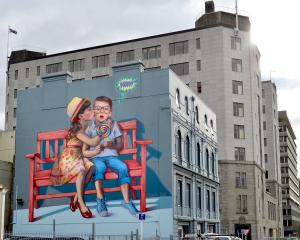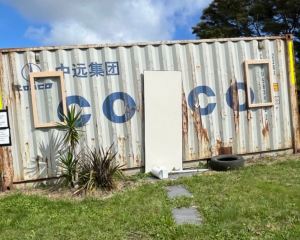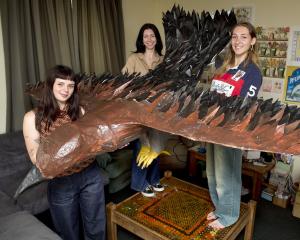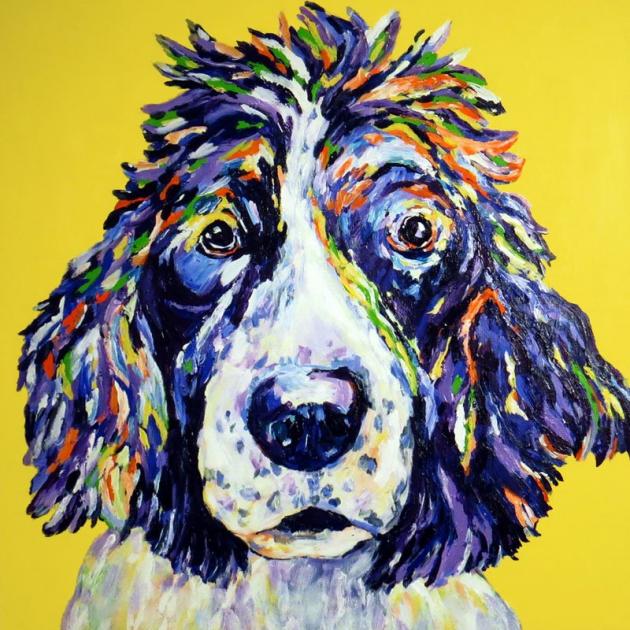
Otago Art Society Spring Exhibition (The Art Station)
As is always the case with large juried exhibitions, there is a panoply of diverse styles and subjects in the Otago Art Society's spring exhibition, with many fine works exhibited. Over 130 pieces and some 75 artists are represented.
Portraits are surprisingly few and far between, and where they are displayed they are generally of animals rather than people.
The stars of these are Hope Bradnock's gossiping pigs and Jenny Sutherland's vivid dog portrait, Fauve Springer.
Ceramics and jewellery are also well-represented, with fine pieces by Kylie Matheson and Bob Wyber.
The winning entry in the OAS competition (sponsored by Anderson Lloyd) is a beautifully shaped ceramic bowl with superb glazing by Danny Morwood.
Second place in the competition is an impressive landscape painting by Andrew Cook, its formal stylings reflecting a surprising number of works which have a traditional academic influence.
Other, disparate styles are well-represented too, from the gentle impressionism of Martin Platt's Afternoon Downpour to Raimo Kuparinen's digital manipulations and Brian Stewart's op art-tinged ''moons''.
Landscapes are a common subject, exemplified by Alastair Begg's snowscape The Traverse, and Robyn Armstrong's evocative watercolour Storm Brewing.
Pauline Bellamy's effective impastoed image of camellias and Mt Cargill deservedly took the third of the competition's prizes.

''Trigongle Tri-gong-glee'', Brydee Rood and Karin Hofko (Blue Oyster Gallery)
Two installation artists known for their different media have collaborated at the Blue Oyster Gallery to produce a series of works exploring the ideas of tribal mysticism and ritual.
The exhibition, in part inspired by a visit to India, creates within the gallery a spiritual space.
The outer sanctum leads the visitor via a zigzag path to a video ritual, then through an array of (literally) reflective prayer flags - also forming a zigzag path - to the items of the ritual, a gong made from found objects which may be played by the visitor.
Beyond this lies the inner sanctum, a darkened space in which two videos take us respectively on both a physical and a metaphysical journey.
The artists have created their shamanistic rites based on the traditions and spiritual dances of cultures from around the world, showing us that every culture has formed its religions and mythologies from a similar set of symbols and signals.
In doing so, they have attempted to create a oneness which questions both the origins of mystical rite and our fading connectedness with the rhythms of the planet.
Buddhist, kabbalistic, and native American influences overlap and mesh in the exhibition, creating something new yet old and making us ponder the origins of these traditions.
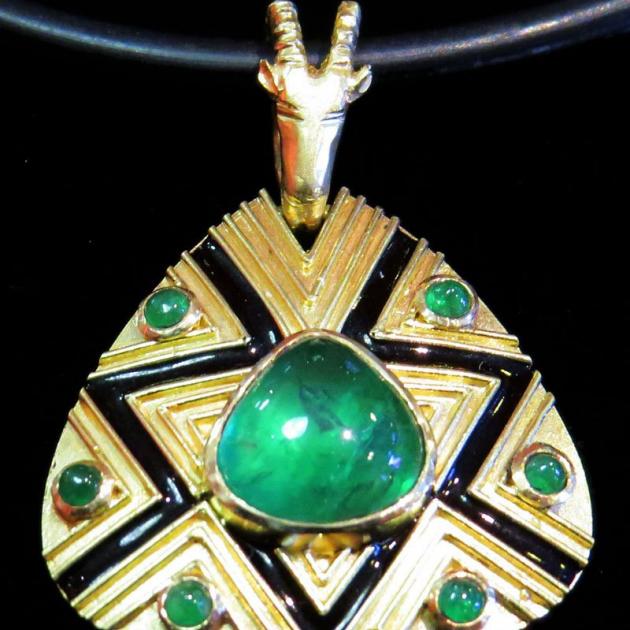
Spring Collection, Tony Williams (Tony Williams Gallery)
Tony Williams is a master craftsman and a master artist, and his skills are shown to good effect in the presentation of several fine new works in the spring jewellery exhibition at his Moray Pl studio.
Pride of place in the exhibition goes to a trio of pendants inspired by the art of Ethiopia.
Constructed from enamelled 18-carat gold, these works are elegantly inlaid with emerald cabochons.
The Ibex pendant in particular, with its clasp shaped as that animal's head, is an exquisite piece.
The jewellery is placed alongside working sketches of the items, allowing a little glance inside the artistic process.
Another notable new work is the Intergalactic bracken/fish brooch, its modernistic design wrought from silver and set with one large bevelled stone of the mineral chrysocolla.
The dappled cyan stone offsets the coolness of silver to perfection.
Nearby is another stunning new work, a ring of white and yellow gold in which is set a deep blue heart-shaped sapphire, crowned by a smaller diamond in a curved trilliant cut.
Alongside the new works sit several older pieces which deserve further display.
Among these, a star is the spectacular Imperial purple necklace in silver and gold, featuring amethysts between large polished purple clouds of the unusual Russian mineral charoite.








